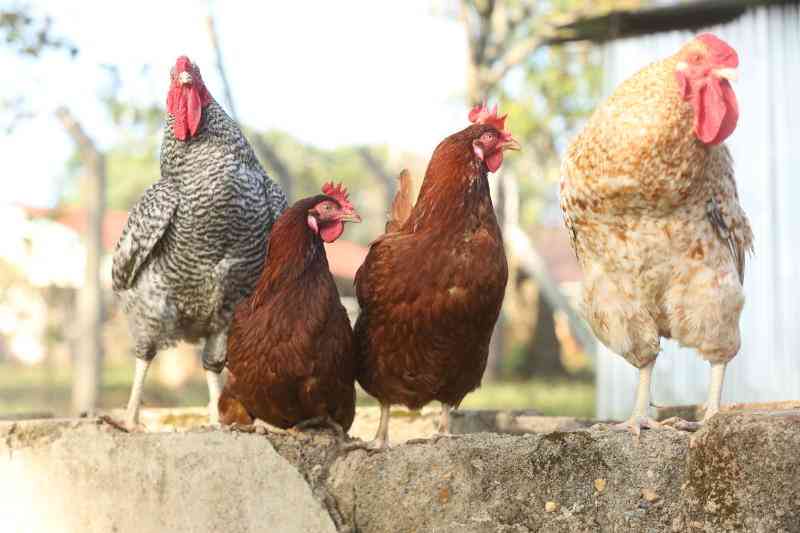
Darkling beetles are insects that are generally black in colour hide during the day and come out during the dark period to feed. They belong to the beetle family Tenebriondae and have been associated with diseases like salmonella (Loeffler), respiratory viral diseases and even worm infestations of chickens. According to (Falomo 1986), the darkling beetle is known to feed on sick birds, dead birds and other organisms and is associated with the spread of Gumboro and Mareks diseases among flocks.
Darkling beetles eat feed.
One can find up to 2 million darkling beetles and their larvae in a broiler house of 10,000. A beetle can grow to a size of 6mm and weigh about 100mg. such a population of beetles can significantly consume chicken feed and affect a one-point on-feed conversion ratio.
Darkling beetles can damage buildings
The beetles can severely damage wood and insulation materials in a chicken house. The annual economic loss per cycle when no control measures are implemented can cost a farmer KS 30,000. Most of this is from loss of insulation and replacement/repair costs over the life of the house. On the Life cycle of beetles, one female beetle can lay 200-400 eggs in 1-5 days intervals and survive for 3-12 months.
Control of beetles on a farm
The important step in controlling the beetle population is to identify the exact point of infestation in the poultry shed. Beetles love humid environments which are a good source of nutrients for the larvae and adult insects, it is important to keep the moisture of the chick beddings low. It is also equally important to check and maintain waterlines to prevent leaks and help reduce beetle numbers.
There are pesticides that are suitable for the type and location of treatments, ensure you follow the manufacturer's instructions on rate of application and concentrations. Do not apply insecticides while birds are in the house, treat within 24-48 hours after birds have been removed. Apply treatments in a manner that can reach beetles beneath the wood shavings or poultry beddings. If infestations are high, birds can be moved to a different site and affected litter treated to ensure that the beetle population is reduced significantly. A combination of adulticide (insecticide against the adult beetle) and larvicide (against the larval stages) has been used effectively to reduce the overall population of these insects.
Litter removal and disposal
Remove all litter and debris from the units at the end of the crop or cycle, dry-clean the floor using appropriate brush do it during the calm weather, and avoid windy weather. If you are going to load on an open truck or trailer, make sure that the heap of litter is covered, and the wheels are properly disinfected.
Litter should ideally be disposed of more than 2 km from the farm. The old litter can be spread and ploughed in the arable land, dumped in a landfill, composted, or alternatively incinerated. There are also innovative technologies available in harnessing poultry manure, especially from layer flocks into a reactor that will allow anaerobic digestion to convert it into methane gas. Methane which is commonly used for cooking is a hydrocarbon that produces more energy per unit compared to oil. It is commonly used for cooking as it has no smell and rarely coats the cooking utensils. It is colourless, and odorless and is the main component in natural gas.
Other pests and rodents.
Rats and mice are generally a menace in a poultry house and are likely to transmit diseases such as Typhoid and cholera. There are two types of rats, the roof rats, and the Norway rats, a female rat can produce up to 12 pups at birth and breed 17 times per year thereby producing about 200 offspring per female. It takes one pup 21 days to mature. Control rat population by baiting or use of traps. The baits should be placed in a baiting station, box or inside a 12-inch-long and 4-inch-wide waste pipe along the perimeter fences, along and on the outside of chicken houses. Baits should not be accessed by wild birds, dogs, cats, or monkeys and therefore should be securely and safely positioned.
[The writer is head Vet at Kenchic]
 The Standard Group Plc is a multi-media organization with investments in media platforms spanning newspaper print
operations, television, radio broadcasting, digital and online services. The Standard Group is recognized as a
leading multi-media house in Kenya with a key influence in matters of national and international interest.
The Standard Group Plc is a multi-media organization with investments in media platforms spanning newspaper print
operations, television, radio broadcasting, digital and online services. The Standard Group is recognized as a
leading multi-media house in Kenya with a key influence in matters of national and international interest.











